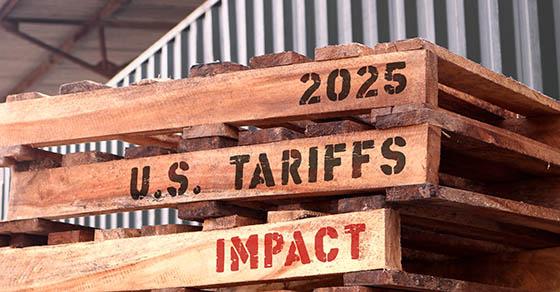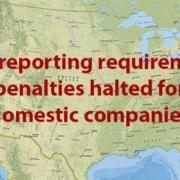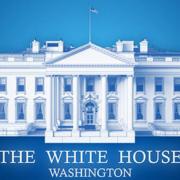Mitigate the risks: Tips for dealing with tariff-driven turbulence
President Trump’s “Liberation Day” announcement of global tariffs caught businesses, as well as foreign countries and worldwide financial markets, off guard. While the president has long endorsed the imposition of tariffs, many businesses expected him to take a targeted approach. Instead, Trump rolled out a baseline tariff on all imports to the United States and higher tariffs on certain countries, including some of the largest U.S. trading partners. (On April 9, Trump announced a 90-day pause on some reciprocal tariffs, with a 10% baseline tariff remaining in effect for most countries and a 145% tariff on imports from China.)
The tariff plan sent businesses, both large and small, scrambling. Even companies accustomed to dealing with tariffs have been shaken because this round is so much more extensive and seemingly subject to change than those in the past.
Proponents of tariffs say they can be used as a negotiating tool to get other countries to lower their tariffs on U.S. imports, thereby leveling the global trade playing field. They also argue that if domestic and foreign companies relocate to the United States, it’ll create jobs for Americans, fuel construction industry growth and provide additional tax revenue.
Since more changes are expected as countries and industries negotiate with the administration for reduced rates and exemptions, some degree of uncertainty is likely to prevail for at least the short term. In the meantime, businesses have several areas they should focus on to reduce the tariff hit to their bottom lines.
1. Financial forecasting
No business should decide how to address tariff repercussions until they’ve conducted a comprehensive financial analysis to understand how U.S. and retaliatory tariffs will affect costs. You might find, for example, that your business needs to postpone impending plans for capital asset purchases or expansion.
Modeling, or scenario planning, is often helpful during unpredictable periods. Begin by identifying all the countries involved in your supply chain, whether you deal with them directly or through your suppliers, and the applicable tariffs, whether you’re importing or exporting goods.
You can then develop a model that projects how different sourcing scenarios might play out. The model should compare not only the costs of foreign vs. domestic options but also the resulting impact on your pricing, labor costs, cash flow and, ultimately, profitability. This information can allow you to build contingency plans to help reduce the odds of being caught flat-footed as new developments unfurl.
Modeling can provide valuable guidance if you’re considering reshoring your operations. Of course, reshoring isn’t a small endeavor. Moreover, U.S. infrastructure may not be adequate for your business needs.
Manufacturers also should note the shortage of domestic manufacturing workers. According to pre-tariff analysis from the National Association of Manufacturers, the U.S. manufacturing industry could require some 3.8 million jobs by 2033, and more than 1.9 million may go unfilled.
2. Pricing
Perhaps the most obvious tactic for companies incurring higher costs due to tariffs is to pass the increases along to their customers. It’s not that simple, though.
Before you raise your prices, you must take into account factors such as your competitors’ pricing and how higher prices might affect demand. The latter is especially critical for price-sensitive consumer goods where even a small price jump could undermine demand.
Consumers have already been cutting back on spending based on rising fears of inflation and a possible recession. Price increases, therefore, are better thought of as a single component in a more balanced approach.
3. Foreign Trade Zones
You may be able to take advantage of Foreign Trade Zones (FTZs) to minimize your tariff exposure. In these designated areas near U.S. ports of entry, a company can move goods in and out of the country for operations (including assembly, manufacturing and processing) but pay reduced or no tariffs.
Tariffs are paid when the goods are transferred from an FTZ into the United States for consumption. While in the zone, though, goods aren’t subject to tariffs. And, if the goods are exported, no tariff applies.
Note: Trump already has narrowed some of the potential benefits of FTZs, so avoid making them a cornerstone of your tariff strategy.
4. Internal operations
If your company’s suppliers are in high-tariff countries, you can look into switching to lower-cost suppliers in countries that have negotiated lower tariffs.
You may not be able to escape higher costs stemming from tariffs, but you can take steps to cut other costs by streamlining operations. For example, you could invest in technologies to improve efficiency or trim worker hours and employee benefits. You also should try to renegotiate contracts with suppliers and vendors, even if those relationships aren’t affected by tariffs. Such measures might make it less necessary to hike your prices.
You can control your overall costs as well by breaking down departmental silos so the logistics or procurement department isn’t making tariff-related decisions without input from others. Your finance and tax departments need to weigh in to achieve the optimal cost structures.
5. Tax planning
Maximizing your federal and state tax credits is paramount in financially challenging times. Technology investments, for example, may qualify for Section 179 expensing and bonus depreciation (which may return to 100% in the first year under the upcoming tax package being negotiated in Congress). Certain sectors may benefit from the Sec. 45X Advanced Manufacturing Production Credit or the Sec. 48D Advanced Manufacturing Investment Credit. Several states also offer tax credits for job creation, among other tax incentives.
This may be a wise time to consider changing your inventory accounting method, if possible. The last-in, first-out (LIFO) method assumes that you use your most recently purchased materials first. The cost of the newer, pricier items is charged first to the cost of goods sold, boosting it and cutting both your income and taxes. Bear in mind, though, that LIFO isn’t permitted under the International Financial Reporting Standards and is more burdensome than the first-in, first-out method.
6. Compliance
Regardless of the exact percentages of U.S. and retaliatory tariffs, you can count on tighter scrutiny of your compliance with the associated rules and requirements. These probably will become more complicated than they’ve been in the past.
For example, expect greater documentation requirements and shifting rules for identifying an item’s country of origin. The higher compliance burden alone will ramp up your costs — but the costs of noncompliance could be far greater.
Stay vigilant
The tariff landscape is rapidly evolving. You need to monitor the actions by the Trump administration, the responses of other countries and how they affect your business operations. You may have to pivot as needed to keep costs low (by reshoring or switching to suppliers in low-tariff countries). If you don’t have the requisite financial expertise on staff to keep up with it all, we can help. Contact us today about how to plan ahead — and stay ahead of the changes.
© 2025








